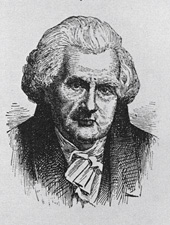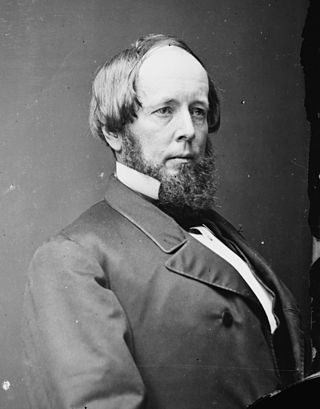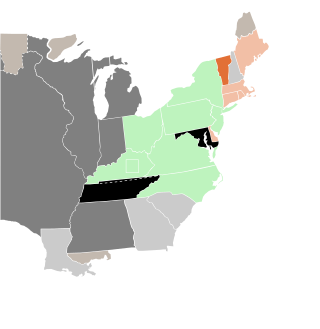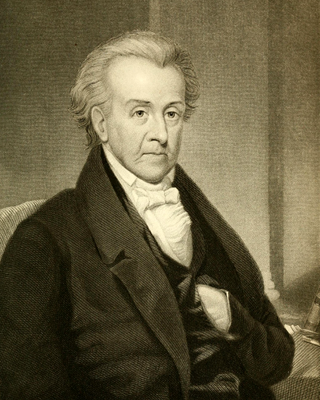
The 13th United States Congress was a meeting of the legislative branch of the United States federal government, consisting of the United States Senate and the United States House of Representatives. It met in Washington, D.C. from March 4, 1813, to March 4, 1815, during the fifth and sixth years of James Madison's presidency. The apportionment of seats in the House of Representatives was based on the 1810 United States census. Both chambers had a Democratic-Republican majority. The first two sessions were held at the Capitol building while the third, convened after the Burning of Washington, took place in the First Patent Building.

Since Connecticut became a U.S. state in 1788, it has sent congressional delegations to the United States Senate and United States House of Representatives, beginning with the 1st United States Congress in 1789. Each state elects two senators to serve for six years in general elections, with their re-election staggered. Prior to the ratification of the Seventeenth Amendment in 1913, senators were elected by the Connecticut General Assembly. Each state elects varying numbers of members of the House, depending on population, to two-year terms. Connecticut has sent five members to the House in each congressional delegation since the 2000 United States Census.

Stephen Mix Mitchell was an American lawyer, jurist, and statesman from Wethersfield, Connecticut. He represented Connecticut in the Continental Congress and the U.S. Senate and was chief justice of the state's Supreme Court.

The 1822–23 United States House of Representatives elections were held on various dates in various states between July 1, 1822, and August 14, 1823. Each state set its own date for its elections to the House of Representatives before the first session of the 18th United States Congress convened on December 1, 1823. They occurred during President James Monroe's second term.
The 1814–15 United States House of Representatives elections were held on various dates in various states between April 26, 1814, and August 10, 1815. Each state set its own date for its elections to the House of Representatives before the first session of the 14th United States Congress convened on December 4, 1815. They occurred during President James Madison's second term. Elections were held for all 182 seats, representing 18 states.

The 1812–13 United States House of Representatives elections were held on various dates in various states between August 3, 1812, and April 30, 1813. Each state set its own date for its elections to the House of Representatives before the first session of the 13th United States Congress convened on May 24, 1813. They coincided with James Madison being re-elected president.

Samuel Whittlesey Dana was an American lawyer and politician from Middletown, Connecticut. He represented Connecticut in both the U.S. House of Representatives and Senate.

James Dixon was a United States representative and Senator from Connecticut.

James Timothy Pratt was a U.S. Representative from Connecticut.

The 1814–15 United States Senate elections were held on various dates in various states. As these U.S. Senate elections were prior to the ratification of the Seventeenth Amendment in 1913, senators were chosen by state legislatures. Senators were elected over a wide range of time throughout 1814 and 1815, and a seat may have been filled months late or remained vacant due to legislative deadlock. In these elections, terms were up for the senators in Class 1.

Pennsylvania held its elections October 11, 1814.
Massachusetts held its elections November 7, 1814. State law required a majority vote for election, which was not met in two districts, leading to a second election January 6, 1815.

New Jersey held its election October 10–11, 1814. The state returned to an at-large basis for electing its representatives, abolishing the short-lived districts of the previous election.

The 1814 United States Senate special election in Pennsylvania was held February 24, 1814. Jonathan Roberts was elected by the Pennsylvania General Assembly to the United States Senate.

Ohio held its elections October 11, 1814.
The 1814 United States elections occurred in the middle of Democratic-Republican President James Madison's second term, during the First Party System. Members of the 14th United States Congress were chosen in this election. During the 14th Congress, Indiana joined the union. The election took place during the War of 1812.

The 1815 Connecticut gubernatorial election took place on April 10, 1815.

The 1814 Connecticut gubernatorial election took place on April 11, 1814.













